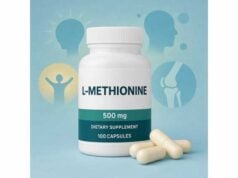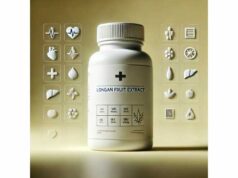
Logwood (Haematoxylum campechianum) is a tropical tree best known for the deep blue-purple dyes made from its heartwood. Beyond textiles, its signature molecule—hematoxylin—became a mainstay in histology labs worldwide. Traditional medicine in parts of Mesoamerica and South America also used logwood bark and heartwood as an astringent wash for skin, gums, and minor wounds, and as a short-course decoction for diarrhea. Modern lab studies highlight tannins and polyphenols that tighten tissues, curb excess secretions, and modulate local inflammation. At the same time, concentrated dye powders and laboratory reagents require careful handling. If you are drawn to logwood for topical toning or heritage dyeing, or you are curious about its place in herbal practice, this guide explains what it does and does not do, how to use it sensibly, how to choose preparations, who should avoid it, and what the research actually shows.
Fast Facts
- Astringent, polyphenol-rich heartwood and bark traditionally used for short-course relief of moist skin irritation, gum bleeding, or diarrhea.
- Typical ranges: decoction of 2–6 g dried heartwood or bark per day, or 20–50 ml of a concentrated decoction used topically; standardized extracts 250–500 mg once or twice daily for short courses.
- Safety caveat: high-tannin preparations can upset the stomach and reduce iron and mineral absorption if taken with meals or supplements.
- Avoid internal use in pregnancy, during breastfeeding without guidance, in children, or if you have anemia, chronic constipation, significant liver or kidney disease, or are on complex medication plans.
Table of Contents
- What is logwood and how it works
- Benefits: what it may help
- How to use: dosage and preparations
- Variables, examples, and pairings
- Safety, who should avoid, and interactions
- Evidence summary and research status
What is logwood and how it works
Botanical identity and parts used. Logwood is the heartwood and bark of Haematoxylum campechianum, a leguminous tree native to Mexico and Central America that spread through the Caribbean and northern South America. The heartwood is dense, dark, and rich in polyphenols. When oxidized, hematoxylin from logwood converts to hematein—the chromophore that binds, with a metallic mordant, to nucleic acids for the familiar blue nuclear stain in histology.
Constituents and functional profile. Logwood contains tannins, flavonoids, phenolic acids, and related polyphenols, along with the dihydroxyanthraquinone-like dye precursor hematoxylin. In traditional use, the tannin fraction drives astringency (tissue-tightening, reduction of secretions), while polyphenols offer local antioxidant and irritation-modulating effects. In dyeing, mordants (e.g., alum, iron) complex with hematein to produce enduring blues, violets, and blacks; in laboratory staining, alum-hematoxylin formulations behave similarly, binding to chromatin.
What “astringent” means in practice. Astringents precipitate proteins on contact, tightening superficial tissues and reducing weeping or minor bleeding. Properly diluted, they can calm wet, irritated skin or gums. Internally, astringents can slow loose stools for short periods but may aggravate dryness or constipation if used too long or at high doses.
How logwood differs from other “astringents.” Compared with very strong tannin sources (e.g., oak galls), logwood’s profile is typically used in short courses and often externally. It lacks the essential oils of aromatic astringents, making it more “cooling” and less stimulating. Because the dye fraction can stain, topical preparations are usually diluted and patch-tested first.
Quality and form. Heartwood chips, coarse powder, and standardized extracts are common. For textile and laboratory use, purified hematoxylin or pre-formulated alum-hematoxylin is used; these are not the same as dietary or topical herbal products and must follow chemical safety rules.
Benefits: what it may help
1) Topical toning for moist, irritated skin. Diluted logwood decoctions can reduce superficial weeping, tighten lax pores, and calm the look of redness associated with minor irritation. The immediate “tightening” feel comes from tannins binding proteins in the outermost skin layers, which can also minimize shine in oily areas. Think of this as a short-term cosmetic and comfort effect rather than a cure for underlying dermatologic conditions.
2) Oral care adjunct (gargle or rinse). Traditional use includes rinses for minor gum bleeding or inflamed gingiva. The goal is tissue tone and reduced exudate while you maintain regular brushing and flossing. A typical approach is to swish a well-diluted decoction for under a minute, once or twice daily, for up to a week. Because polyphenols can stain enamel and tongue surfaces if too concentrated, dilution and time limits are crucial.
3) Short-course support for uncomplicated diarrhea. In many herbal systems, astringent decoctions serve as brief supports when stools are loose due to diet indiscretion. The mechanism is mechanical (protein precipitation on mucosa reduces secretion). This is not appropriate for high-fever illness, blood in stool, suspected infection requiring antibiotics, or dehydration risk. Use only for 1–2 days while rehydrating and advancing diet; seek care if symptoms persist.
4) Heritage dyeing and craft uses. For natural dyers, logwood offers a wide palette—from violet to near-black—depending on mordant and pH. While this is not a health “benefit,” it is a primary modern use. Safe workshop practice matters: wear gloves, avoid inhaling fine powders, and keep dye materials out of the kitchen and away from children and pets.
5) Laboratory utility (contextual). Hematoxylin from logwood underpins the ubiquitous hematoxylin-eosin stain in pathology, helping clinicians read cellular detail. This underscores logwood’s cultural and scientific importance, though the reagents used are laboratory chemicals, not supplements.
What not to expect. Logwood is not a broad antimicrobial, metabolic booster, or daily tonic. It does not treat chronic inflammatory skin diseases, systemic infections, or nutrient deficiencies. Benefits, where present, are local, astringent, and time-limited—strongest in topical or rinse formats.
How to use: dosage and preparations
Traditional internal uses (adults, short course only).
- Decoction (sipping): simmer 2–3 g of coarsely crushed heartwood or bark in 250–300 ml water for 10–15 minutes; strain. Take 100–150 ml/day in divided sips for 1–2 days for uncomplicated loose stools. If dryness or constipation appears, stop.
- Powder (capsules): 250–500 mg once or twice daily for up to 3–5 days, preferably after meals. Do not exceed these durations without professional guidance due to tannin-related GI effects.
Topical and oral-rinse uses.
- Skin toning splash or compress: prepare a stronger decoction by simmering 5–10 g chips in 300 ml water to reduce to 150 ml; dilute 1:3 to 1:5 with cool water before use. Apply to intact skin with a cotton pad for 30–60 seconds, then rinse. Use once daily for 3–7 days, then reassess.
- Gargle/mouth rinse: dilute a concentrated decoction 1:5 to 1:10 with warm water. Swish for 30–45 seconds, once or twice daily for ≤7 days. Do not swallow the rinse.
- Sitz bath for minor perianal irritation: add 30–50 ml of concentrated decoction to a basin of warm water; soak 5–10 minutes, 1–2 times/day for ≤3 days.
Standardized extract.
- Extract capsules: 250–500 mg once or twice daily for up to 2 weeks in topical-dominant protocols (e.g., for skin where internal support is desired). Choose products with clear species, part (heartwood/bark), extraction ratio, and third-party testing.
Formulation and practical notes.
- Taste: expect a decidedly astringent, slightly bitter taste.
- Staining: concentrated decoctions can stain fabrics, sinks, and occasionally skin; dilute and rinse after contact.
- Spacing from nutrients: separate internal doses from iron, zinc, calcium, and magnesium supplements by 2–4 hours to avoid binding and reduced absorption.
- Hydration: pair internal use with adequate fluids and a bland, non-irritating diet during short-course use.
When to stop or change approach. If loose stools persist beyond 48 hours, if there is fever, blood, severe pain, or signs of dehydration, stop herbal self-care and seek medical attention. For persistent gum bleeding, see a dental professional.
Variables, examples, and pairings
1) Constitution and current state. Astringents shine when there is dampness (weeping, discharge, moist irritation). If you run dry—constipation, dry skin, chapped lips—use topical routes or select demulcent partners (e.g., aloe gel for skin; slippery elm or marshmallow as teas for the gut) rather than pushing internal logwood.
2) Goal-specific form selection.
- Skin/oil control: topical splashes or masks do more with less systemic exposure.
- Gums: short-course gargles are more efficient than capsules.
- Loose stools: brief decoctions can help alongside rehydration and diet rest.
3) Smart pairings.
- For skin comfort: logwood (astringent) + aloe gel (soothing) for balance.
- For oral care: logwood rinse + gentle mechanical hygiene + a fluoride or dentist-recommended remineralizing paste between courses.
- For diarrhea diet reset: oral rehydration solution or broths; small, frequent sips; starchy foods as tolerated.
4) Quality and authenticity. Logwood has a long trade history; ensure the product lists genus and species, plant part, and is screened for contaminants (heavy metals, microbes). Heartwood chips or coarse powders from reputable suppliers are preferable to unlabeled “dye woods” for any wellness application.
5) Duration and cycling. Astringents are tools, not daily tonics. Plan short blocks (days to a couple of weeks for topical use), then pause. Long, uninterrupted internal use increases the chance of constipation and nutrient interference without extra benefit.
6) Measuring progress and adjusting. Keep a simple log: number of loose stools per day, gum bleeding on brushing (none/mild/moderate), skin oiliness (subjective 0–10), and any GI discomfort. If numbers do not improve within the expected timeframe—or if dryness emerges—adjust dose, switch to topical only, or discontinue.
7) Craft and lab contexts. If you use logwood for dyeing or microscopy, treat the powders and mordants with laboratory respect: dust control, gloves, eye protection, and dedicated equipment separate from cooking spaces.
Safety, who should avoid, and interactions
General profile. Culinary exposure to tannin-rich plants is common, but concentrated herbal or dye preparations are different. Most adults tolerate short, modest exposures, particularly when the emphasis is topical or as a brief oral rinse. Internal use beyond short courses is not recommended without individualized guidance.
Potential side effects (usually dose- or duration-related).
- Gastrointestinal: stomach heaviness, nausea, constipation. Reduce dose, limit duration, and take after meals.
- Oral/dental: temporary tongue or enamel staining with undiluted or over-concentrated rinses; always dilute and limit contact time.
- Skin: dryness or tightness; avoid broken skin and test first on a small area.
- Allergy/irritation: rare; discontinue if rash, itching, or swelling occurs.
Who should avoid or seek medical guidance first.
- Pregnancy and breastfeeding: avoid internal use; topical use should be minimal and well-diluted if at all.
- Children: do not use internally; avoid unsupervised topical applications.
- Anemia or iron deficiency: separate any internal doses from iron by 2–4 hours, and consider avoiding internal use due to tannin-iron binding.
- Chronic constipation, dry skin, or Sjögren’s syndrome: prefer non-astringent strategies.
- Significant liver or kidney disease: avoid concentrated internal preparations without specialist input.
- Complex medication regimens or narrow therapeutic index drugs: consult your clinician; separate internal use by 2 hours from oral medicines to limit binding.
Interactions and timing.
- Minerals (iron, zinc, calcium, magnesium): tannins reduce absorption; separate by 2–4 hours.
- Alkaloid-containing herbs or drugs: theoretical binding interactions; spacing reduces risk.
- Alcohol and very spicy foods: may counter the calming goal for irritated mucosa; reduce while using astringents.
Chemical safety note (dyes and lab reagents). Pure hematoxylin and certain mordant solutions can irritate eyes, skin, and airways if mishandled. If working with laboratory-grade materials, follow the product’s safety data sheet, use gloves and eyewear, control dust, and keep these chemicals away from food areas and children.
Evidence summary and research status
What tradition suggests. Historical sources from Mexico and Central America describe logwood preparations as astringent washes and decoctions for moist, inflamed tissues and loose stools. This aligns with the chemistry: abundant tannins and polyphenols plausibly explain tissue-tightening and local soothing.
What modern studies add. Laboratory investigations of Haematoxylum campechianum extracts report polyphenol content, antioxidant activity, and signals consistent with irritation modulation. In the craft and laboratory worlds, the chemistry of hematoxylin/hematein binding to proteins underlies both dyeing and nuclear staining, testifying to a robust and durable affinity for biomolecules.
What we still need. High-quality, placebo-controlled clinical trials isolating logwood as a single agent for specific health outcomes are sparse. Most contemporary clinical-grade work focuses on the histology application rather than supplementation, and on broader discussions of tannins’ traditional roles. Until more targeted human data accumulate, logwood should be used conservatively and locally, with short durations and clear endpoints.
Bottom line. Logwood is best positioned as a specialist, astringent, mostly topical ally with a celebrated role in dyeing and diagnostics. If you choose to use it for wellness, match the form to the goal, favor short courses, respect tannin biology, and keep your clinician in the loop for ongoing or severe symptoms.
References
- Haematoxylon campechianum Extract Ameliorates Chronic Cyclophosphamide-Induced Cystitis in Rats 2020 (Experimental Study)
- Hematoxylin: Mesoamerica’s Gift to Histopathology. Palo de Campeche, Campeche, Mexico 2019 (Historical Review)
- The long history of hematoxylin 2005 (Historical Review)
- Compendium of botanicals reported to contain naturally occurring substances of possible concern for human health when used in food supplements 2012 (EFSA Compendium)
- Bio-mordants: a review 2024 (Review)
Medical Disclaimer
This guide is educational and does not substitute for personalized medical advice, diagnosis, or treatment. Do not use logwood internally as a routine daily supplement. If you have persistent diarrhea, gum disease, significant skin inflammation, ongoing bleeding, chronic illness, are pregnant or breastfeeding, or take prescription medications, consult a qualified healthcare professional before use. Stop use and seek care if symptoms worsen, new symptoms appear, or you experience adverse effects.
If you found this article helpful, please consider sharing it on Facebook, X (formerly Twitter), or any platform you prefer, and follow us for more evidence-based guides. Your support helps us continue producing high-quality content.










